Confusing Garden Terms Explained
When you’re a beginning gardener, you may find yourself swimming in a sea of unfamiliar garden terms. When I was getting started, I got several things wrong because I misunderstood some of these common words.
In this episode of the Beginner’s Garden Podcast and in the article below, you’ll learn some of the most common misunderstood gardening terms. Click below to listen or continue reading.
*links below may contain affiliate links
Annual vs Perennial vs Biennial
When you think of “annual,” you think of “year.” Therefore, at the most basic definition, annual plants need to be planted every year. They complete their reproductive cycle in one season. Perennial plants, on the other hand, either survive year-round or will go into a period of dormancy before re-emerging in the spring.
But, there’s another aspect to perennial plants that we must understand — whether a plant will live year-round will depend on your climate.
Botanically speaking, a perennial plant will survive year-round in the right conditions. But if you live in a climate where that plant can’t survive your winter, it acts as an annual, even though in the right climate it’s actually a perennial. For example, peppers are technically a perennial plant. Gardeners in warmer zones grow peppers year-round, and gardeners in milder zones can overwinter peppers in a sheltered environment. But for those of us in cooler areas (or if we don’t bring peppers to a warmer area in the winter), they will die at our first frost and will not come back. Many herbs will also function in this way.
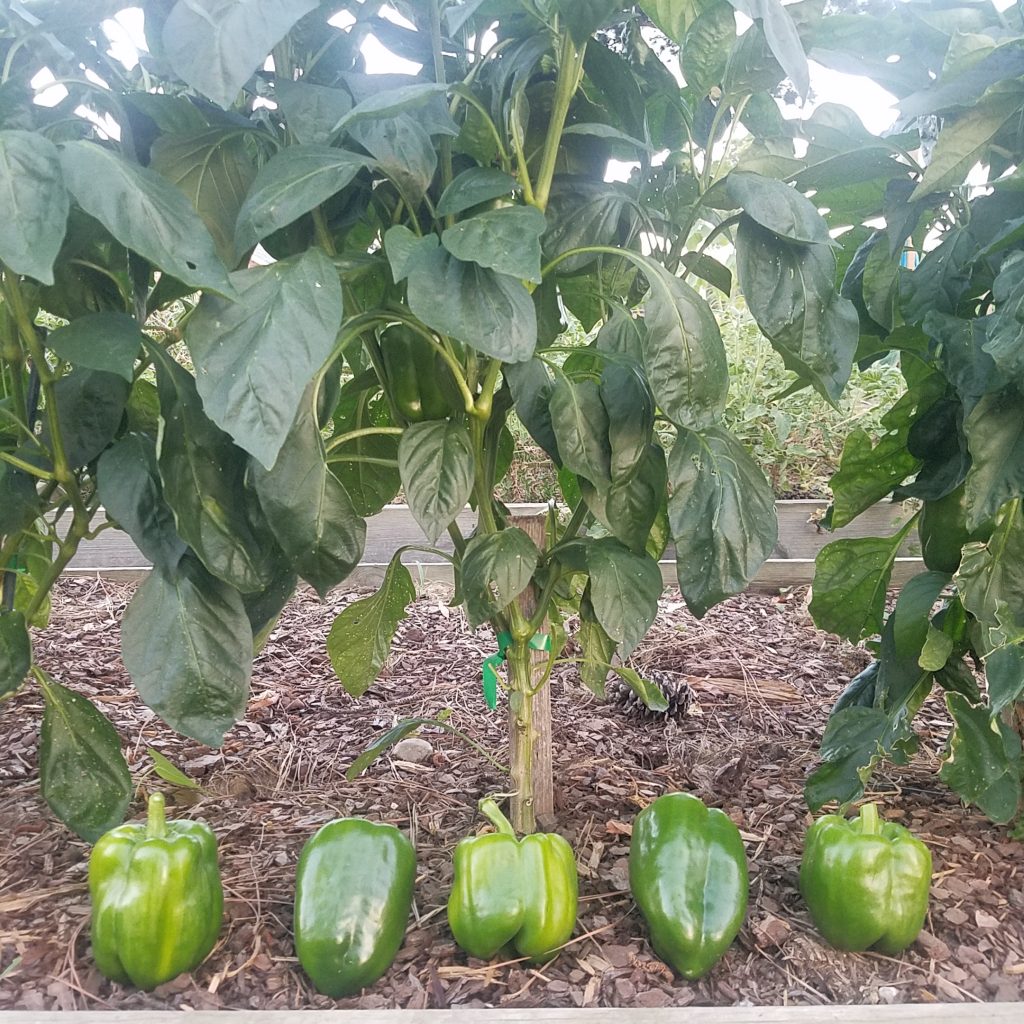
A biennial plant completes its life cycle in 2 years if allowed. Examples of biennial plants include carrots, onions, and parsley. These plants will grow one year, and if not harvested, lie dormant through the winter. Then, the second year they will send a flower stalk and produce seeds to complete its life cycle.
Frost vs. Freeze
A frost occurs when you see visible frozen water droplets on your plants. This can happen whether or not the air temperature is freezing. When I see the temperature will get below 40*, I will prepare for a frost even though they typically don’t happen until it gets below 36*. You can also learn how to extend your harvest through some of these temperature dips.
A light frost is when frost occurs on plants though the air temperature is between 36*-32*. Most crops, except for the most fragile, will last through a light frost. A hard frost is when a frost occurs on plants but the air temperature is 32* or below. The frost itself is temporary, like a frozen dew, and will evaporate fairly quickly. While a light frost can damage some of your most tender crops, it is not as deadly as a hard frost.
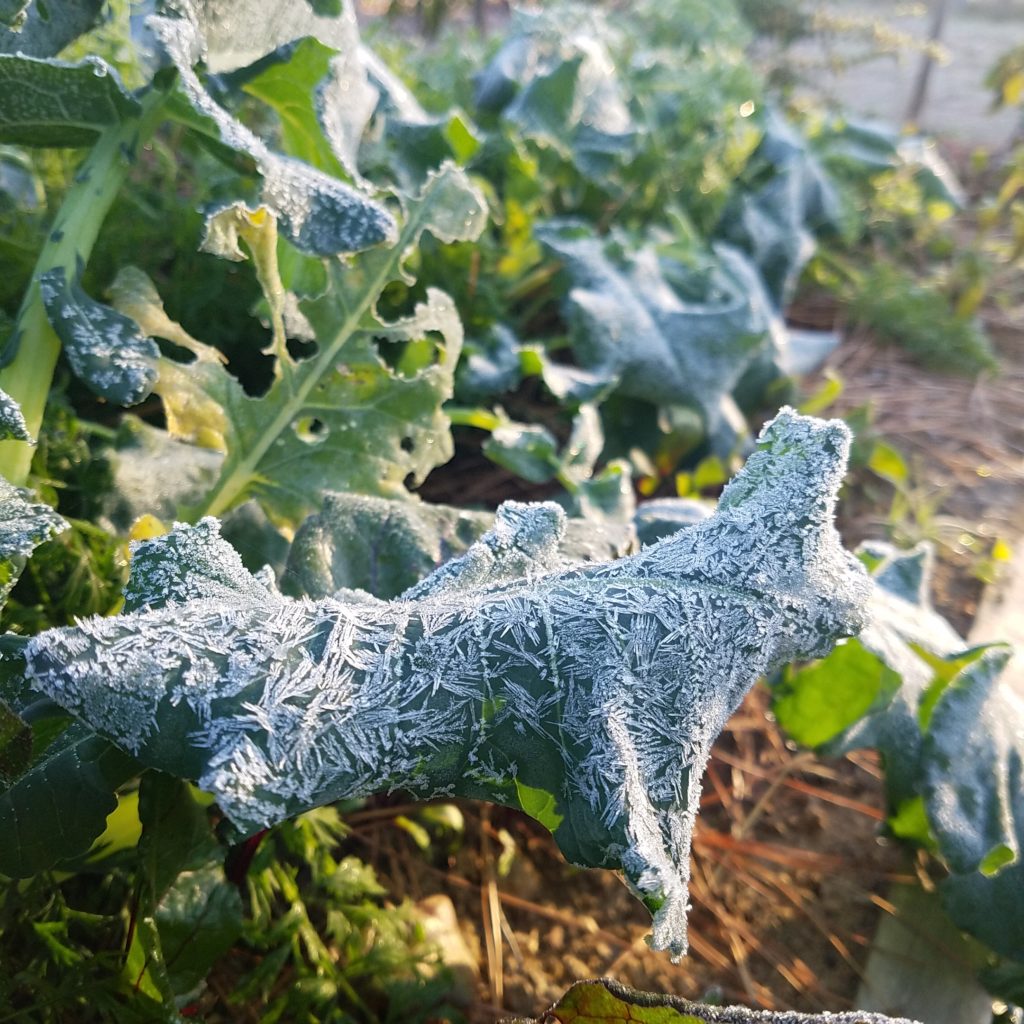
A freeze is when the air temperature drops below 32* with or without a frost. A light freeze is when air temperatures dip to between 29*-32*, a moderate or hard freeze occurs between 25*-28* and a severe or killing freeze is when the temperature gets below 25*.
A freeze can be detrimental, but it primarily depends on the hardiness of the plant. But, there are also other factors that decide whether a freeze will kill or damage your plant.
First, how long does the air temperature stay below freezing? Freezing temperatures for a few hours in the early morning, followed by a mid-morning warm-up will not hurt plants like a freeze that stays sustained throughout the day.
Second, how mature is the plant? Very young seedlings can be more vulnerable than older, mature plants.
Third, are the plants accustomed to the cold? A rapid decrease in temperature (like a swift cold front) for a fall garden will hurt plants more than a gradual cooling period.

In my experience, the best way to understand the hardiness of your plants when it comes to frosts and freezes is to observe them in your garden, taking into account the factors above. Then you can know when to protect your plants in the spring, fall, and winter.
(Learn more about the technical definitions of a frost and a freeze from the Michigan State Extension Center.)
Tomato Terminology
A few terms people throw around when it comes to growing tomatoes can be confusing for the beginning gardener.
Determinate vs. Indeterminate: A determinate tomato will grow to a pre-determined, set height and it will produce all of its fruit within a couple of weeks. I like to grow determinates like Romas because they will produce all of their tomatoes and then I can take the plants out of my garden and use the space for something else. Indeterminate tomatoes grow and grow taller than you and they will produce their fruit all season. They take a little longer to fruit as they tend to be larger tomatoes.
Sucker: When we talk about suckers, we are mainly talking about indeterminate tomatoes. On these plants, your plant will have a vertical and a horizontal stem. Then, a stem grows at an angle between the vertical and horizontal stems. If not pruned, the sucker will turn into its own stem. I have tested whether it is better to prune or not, but I recommend you also testing it in yours.
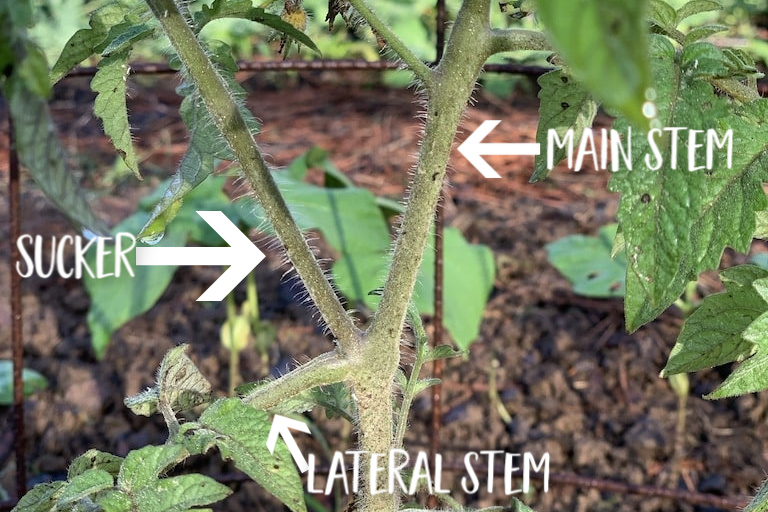
Thinning [Seedlings]
Thinning is when you remove seedlings when you have planted too many seeds in an area (or when your seeds germinated much better than you’d hoped!). It is a common problem for beginner gardeners to overseed and then be so excited when they see their seedlings start to come up, and they don’t want to remove them. The problem is that each plant needs room and nutrients from the soil to grow healthy and strong.
When should you thin your seedlings? I prefer to wait until there are true leaves, which is what appears after the first two leaves. The exception to this is when I thin seedlings after they sprout, and I harvest the sprouts for microgreens.
The easiest way to thin seedlings is with microtip pruning shears.
Organic Definition
At its root, “organic” means “related to or derived from living matter,” but when it comes to food it takes on a different meaning. In your garden, organic means food grown without chemical fertilizers, pesticides, or any other artificial agents.
You can get as technical here as you want. Some would say that it’s not organic to use city water to irrigate the garden, or that using coffee grounds in compost isn’t organic unless the coffee was labeled certified organic.
Personally, I don’t think it is necessary for the home gardener to go that far, but hey, you totally can!
Chop and Drop
“Chop and Drop” is most commonly used when talking about cover crops. I use buckwheat often as a cover crop and after it matures, I cut it at soil level and let it drop to the ground. I often use a hoe to cut it up and help it to decompose. This lets the crops add nutrients back into the soil.
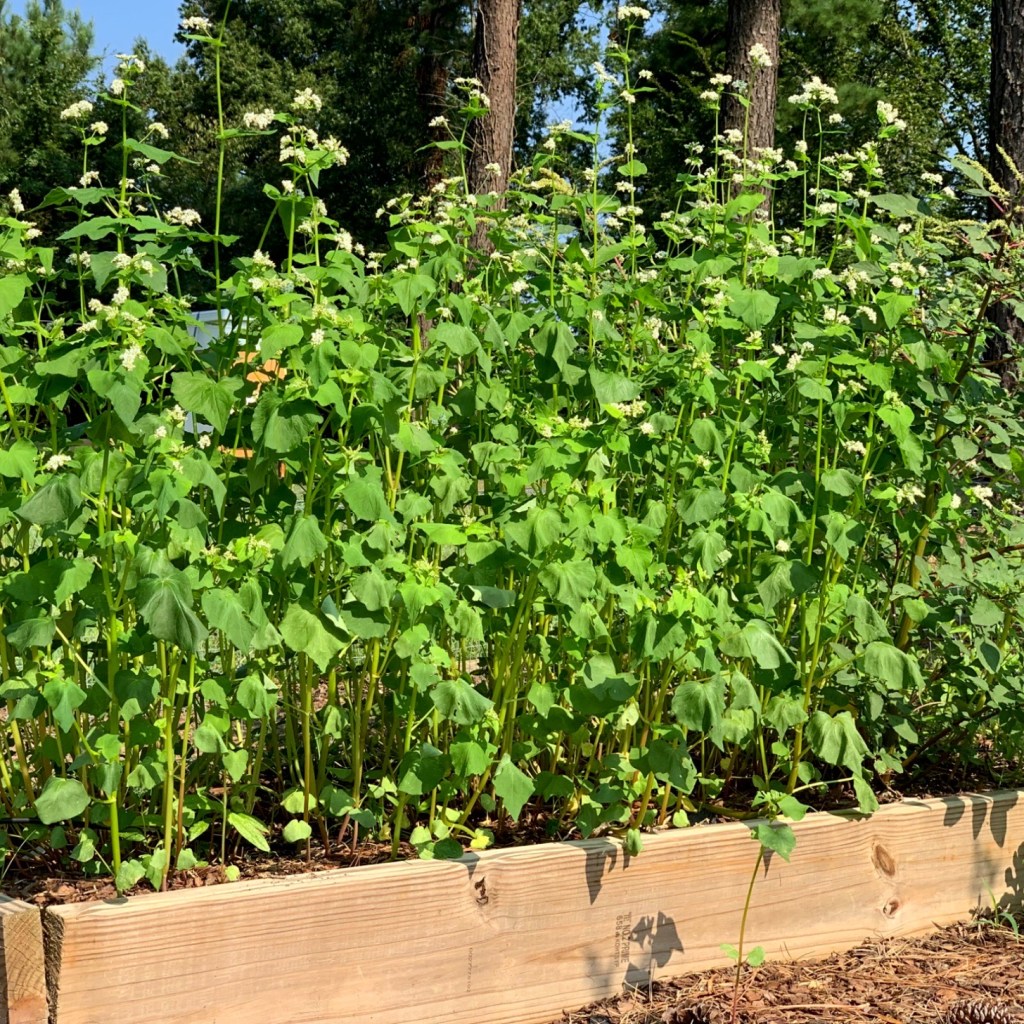

You can use the “chop and drop” method for more than just cover crops, though. Anytime you cut down a spent plant and leave it on the soil to decompose and add organic matter, you’re using the “chop and drop” method. As long as your plants aren’t diseased, this is a great way to feed your soil.
Gardening Zone
I have talked about gardening zones before because there is so much misinformation in gardening circles. Your garden zone is based on your average minimum temperature. Zone has to do with perennial plants and which ones will last year after year. It has nothing to do with when you should plant your crops.
Your garden zone can tell you what perennials will do well in your climate. Some crops need enough cool weather and some enough warm weather and your zone can help you decide if that crop is right for your area. When purchasing any perennial vegetable, fruit, or herb, you will find a range of zones listed on the tag or in the description, and this will tell you if the plant will likely grow year after year in your area.

Diatomaceous Earth
Diatomaceous earth is an organic pest control method. It is a white, powdery substance that is the fossilized remains of diatoms. It will kill soft-bodied pests like aphids and caterpillars. But remember that anything that will kill these pests will also kill beneficial insect larvae like lady bugs and syrphid flies. It can be effective but take great care not to apply near flowers where bees visit.
Humus
Humus is a wonderful soil material, technically it is decayed organic material. When it has been broken down, it offers nutrients to our crops.
Bolting
When a plant bolts, it sends up a flower stalk that will produce seeds before its natural life cycle is over. This often happens with onions. When it sends up its stalk, it has stopped growing the onion bulb.
Cilantro, parsley, lettuce, spinach, broccoli, and other crops also bolt when it gets too hot and there are stressful weather conditions. When a crop bolts, the quality and flavor is greatly compromised. Or in the case of broccoli, you lose the chance to harvest a head entirely.
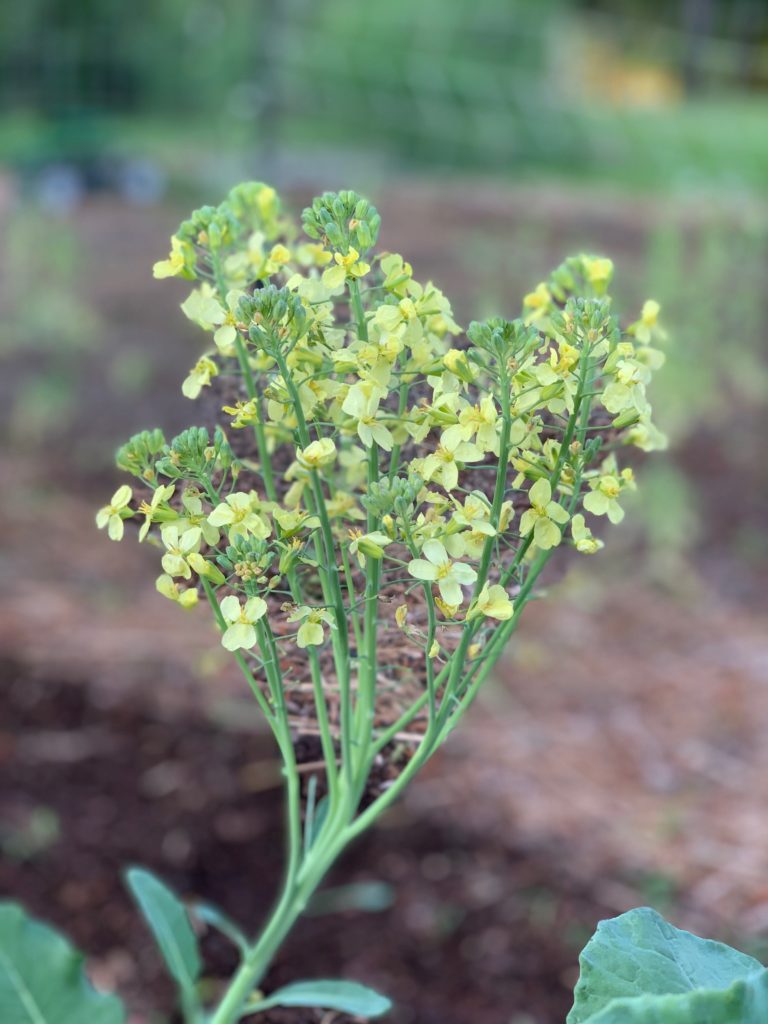
Bolting isn’t reversible, so you have to choose whether to let the plant flower and attract beneficial insects or remove it in order to plant something else. I tend to leave these flowers to attract beneficial insects unless I need the room in my garden for another crop.
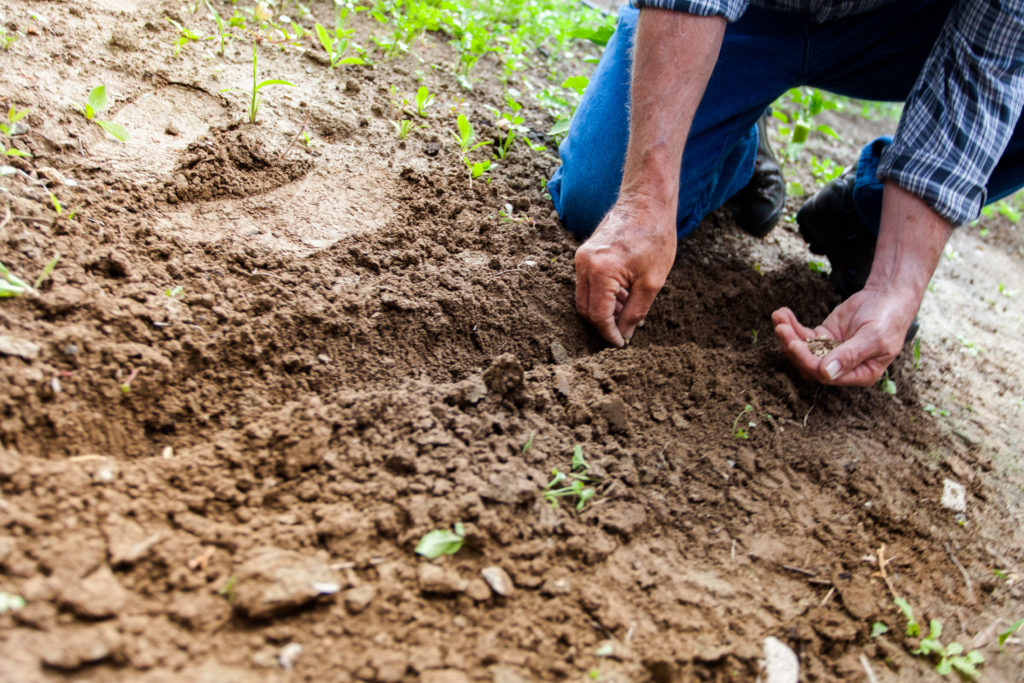
Direct Sow
Direct sowing is when you take a seed and sow it directly into your garden bed. You are not buying a transplant or starting these seeds inside. There are several crops that are worth waiting to start until you can sow them directly in your garden soil.
Days to Maturity
You will see this on your seed packet and it tells you how many days until the plant will reach full maturity. Is this from seed or from transplant? Days to maturity is counted from when the plant reaches its location in your garden. If you start a bean in the soil, it starts when you plant it. If you start a tomato inside, you start counting when you transplant it to your garden.
There are many variables that affect how long it takes a crop to reach maturity, so remember this number on a seed packet is more or less an average. The actual days it takes for one plant to reach maturity may be affected by soil temperature, day length, or even the condition of the soil.
How do you use “days to maturity” in your garden? Instead of focusing on the days as a rigid number, focus on the difference between varieties. Choose two crops, for instance, that have varying days to maturity so you can harvest in a longer window between the two. Also, if you live in a shorter-season area, choose a crop that matures faster than one with a longer harvest time.
Full sun
If you hear that a plant needs full sun, that means 6-8 hours or more of unfiltered, direct sunlight. Unfiltered means that it is not filtered through trees or a building that would cast a shadow. But dappled sun is better than a hard shadow from a structure.
In general, most fruiting and root crops require full sun, while leafy crops demand less.
I hope that going over these commonly misunderstood terms has helped you in your garden! What other terms have you had a hard time understanding or do you think are commonly misunderstood?
Do you get overwhelmed with garden planning?

Subscribe here for my best tips to plan your garden in just 7 days -- all for FREE.
Plus, I'll send you my "In the Garden E-mail" on Fridays, periodic updates on garden resources relevant to you, and you'll receive access to my entire bank of free garden downloads!
You are also agreeing to our privacy policy.

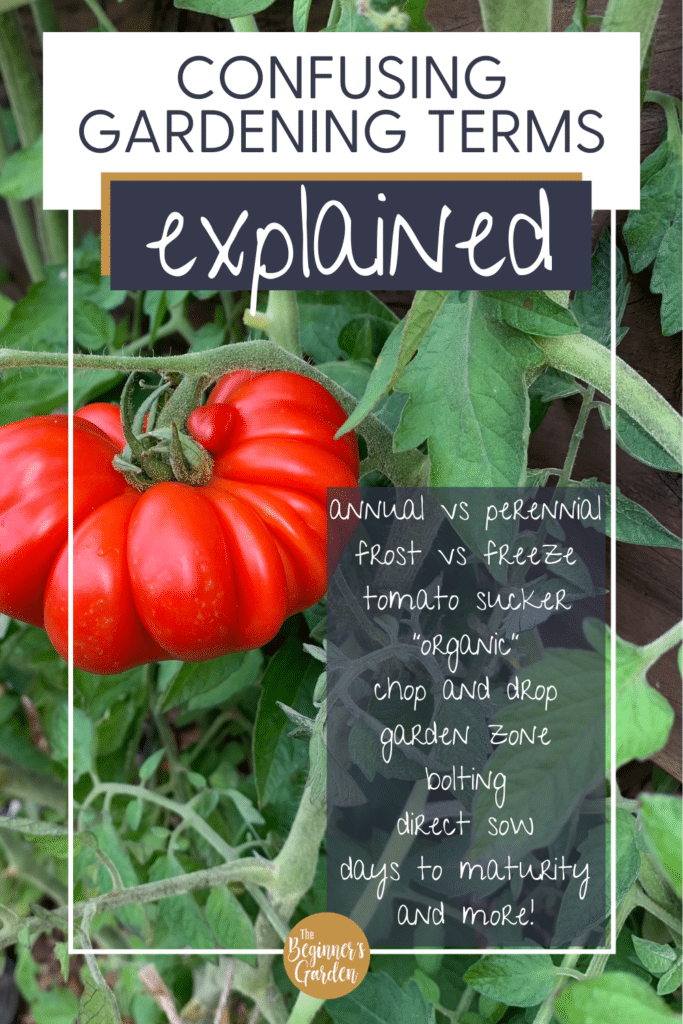

Hi Jill
I would like to help with your illustration on the tomato plant and correct some information.
The main stem is also called the leader. What you called “sucker” is actually a lateral which grows at the node site between the stem and leaf,. Depending on your pruning method and whether or not you keep one or two laterals along with the main stem or leader, this/these can a become secondary leader/s.
What you illustrate as a lateral stem is actually a leaf.
Suckers usually form at the base of the plant near the soil usually below the site of the first true leaves, and with good growing conditions can be easily removed and replanted and grow as an exact clone of the original plant.
Hi Jill
I was thinking about your discussion on “bolting” and I have a couple of other reasons for bolting
1. The plant was damaged at transplant time or has had physical damage done during its growth
2. And another and I think the main reason is to do with the season. Is the plant growing out of season or wrong climate zone? Or planted too late in its normal season? Or day length sensitive which involves which side of both the solstices and equinoxes and the plant seems to knows if the days are lengthening or shortening.
I hope I am not confusing you too much